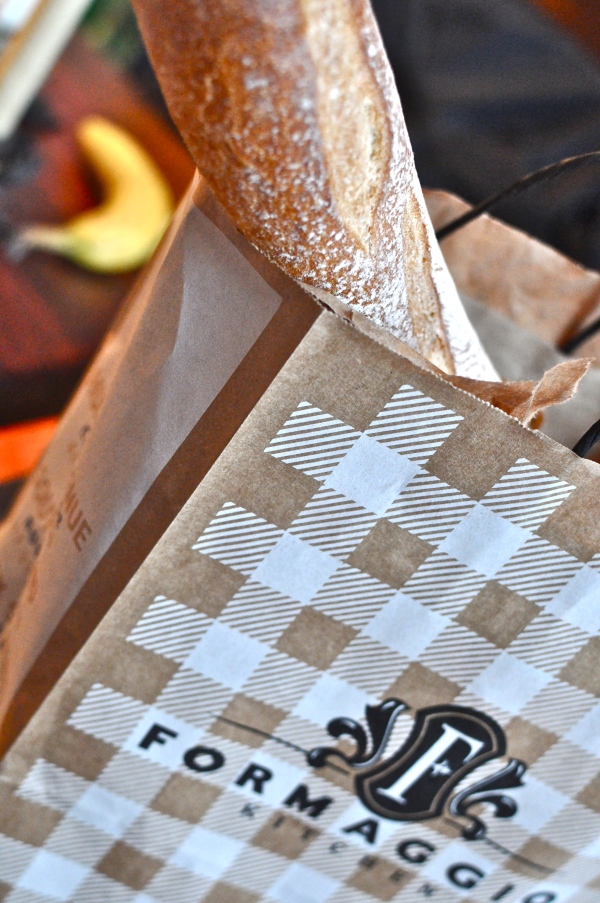a proper cheese plate
Friends of my mine have always commented on my obsession with neck scarves. I’m not sure how it came to be that I grew such an absurd collection of them, but eventually I had to go and purchase a few of those special wooden hangers filled with holes — just for my scarves. I suppose the best way I can explain it is that if I put one on, I just feel a little more dressy and put-together than I do without one. It somehow…completes my look.
Well that is exactly how I feel about a nice cheese platter. You take your average meal – your average “menu”….you add a cheese plate…and voila! It dresses the whole evening up a bit. Just a touch of fancy. Cheese platters are basically the neck scarves of my dinner parties.
When K and I were honeymooning in France, we celebrated happy hour every day by perusing the market for the perfect combination of baguette/cheese/bottle of wine and then we’d mosey back to the hotel to enjoy the finds on our little balcony in the late afternoon. Every now and then, nostalgia gets the best of me and I’ll surprise K with a similar spread when he arrives home from work. We sit on the floor, drink the wine from little glass cups and rehash the day.
Lately I’ve been giving some thought to what makes a simple but great cheese platter, and I thought I’d share a tip or two. The creative [but not so memorable] acronym I came up with is HiBiSCuS. Like the flower? Get it? Work with me here. The capitalized consonants each represent important elements in a “proper” cheese platter. You can just ditch the vowels. …. It’s kind of a weak acronym, huh?
For instructions on creating a well-balanced cheese plate, please refer to “Exhibit A” below.
STEP ONE: begin with a minimum of 3 cheeses: a hard cheese (A), a soft cheese (B) and a bleu cheese (C).
STEP TWO, you must provide your palate with a solid sugar/salt fix. For that, you should include fresh or dried fruit (even honey or chocolate) for the sweet element (D), and something cured (E) – like proscuitto, salami, olives, or roasted nuts for the salty element. Side note: my lovely neighbor actually introduced me to these incredibly addictive crackers which I’ve been including lately as part of the “sweet” family.
Last but not least STEP THREE: remember your carbs. Pick one or several: Crackers. Breads. Baguette. Everybody loves carbs. After all, they are the boats that carry sweet relief to our yearning tastebuds!
At this point I could delve a bit deeper and begin talking about cow vs. sheep, or country of origin, but I think I’ll just keep it simple and end with a link to my favorite cheese shop. (That’s for my fellow Bostonians who haven’t yet had the pleasure).
May your holidays be filled with cheese platters and plenty of scarves…





Another wonderful post. I love the analogy and the acronym!
Sounds like things are yummy at your house!
The acronym is pure genius! I always had trouble deciding what should go on a cheese plate. You can K are pros though. I was really impress with the spread K had set up when we visited last month.
Love this, Nik! Question – what if you are only occasional cheese eaters? Everytime I buy cheese, people nibble a bit and then it all goes to waste. Guess we’ve got to kinda turn it into a dinner almost? Or are there certain ones that last longer? Clearly, I’m an amateur here 🙂
SEM: I feel you. Bleu cheese, although it’s a so-called “must” never gets eaten completely when I put it out. So I buy the smallest wedge I can find and only cut 3 small slices for the platter, putting the rest back in the fridge. I don’t cut much up because the leftover pieces that sat out for a few hours always spoil faster than the wedge that stayed in the fridge the whole time. If guests devour it, I’ll repeat the process. Hard cheese lasts a lot longer than soft cheese. I’ve also read that re-wrapping it with new paper/plastic each time you use it helps prolong shelf life.
What beautiful photos! Thank you for the shout out!
This is a keeper! Beautiful way to display and explain!!!
Great post. I can’t usually eat blue cheese, but I do like the salty, crumbly cheese addition. Parmesan can do the trick. We often make a 3 cheese theme: three textures of goat, or three soft cheeses (cow, sheep and goat). Thanks.